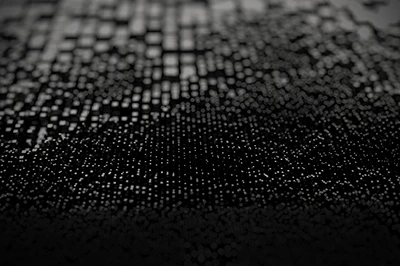Aug 18, 2025
Peraton has demonstrated innovative, AI-based control technology called Adaptive Control with AI (ACAI) that assures safe operation of diverse robotic systems in challenging environments and unforeseen conditions, while also providing guidance and situational awareness to human operators.
The Peraton-designed control capability has been successfully tested on a damaged, robotic Army ground vehicle operating in difficult terrain and on a crane performing simulated ship-to-ship replenishment in an environment of heavy seas. ACAI is supported by Defense Advanced Research Projects Agency’s (DARPA’s) Learning Introspective Control (LINC) program, which develops technology to enable ground vehicles, ships, drone swarms, and other robotic and autonomous systems to operate safely under physical attacks, extreme environments, or unanticipated conditions of use.
“We are proud to be at the forefront of developing cutting-edge technology that directly supports critical missions,” said Todd Borkey, chief technology officer, Peraton. “By advancing autonomous systems, we are helping government agencies seamlessly integrate AI and machine learning into their operations, architecture, and systems. Our technology transforms adaptive control by enabling real-time updates across diverse systems leading to enhanced mission performance and outcomes for our customers.”
In June 2025, ACAI participated in a demonstration and testing exercise at Sandia National Labs aimed at Underway Replenishment (UNREP), a critical logistics challenge for the Navy. UNREP allows ships to receive supplies at sea and remain underway indefinitely, rather than requiring them to return to port. For heavy payloads and in high seas, current UNREP methods fall short. Payloads can sway widely and wildly, damaging personnel, ships, and supplies. Current methods control sway caused by user actions but are unable to compensate for sway due to ships heaving in shifting and unpredictable waves.
Video of simulated crane on high seas without ACAI. The chaotic swings of the payload make it hard for an operator to steer it to the moving target and keep it there.
For the exercise, a crane equipped with ACAI was mounted on a moving platform and tasked with carrying a cylindrical payload, simulating a missile, and inserting it into a silo. The ACAI controller exceeded all exercise metrics, successfully demonstrating the ability to maintain safety and avoid payload collisions with the silo rim, the platform, the crane boom, or simulated personnel stationed on the platform. In further stress testing with drastically increased platform motion, the ACAI controller continued to limit payload sway and avoid collision.
Video of simulated crane on high seas with ACAI enabled. ACAI enables the payload to closely track the moving target, making it far easier for an operator to accomplish the above mission.
In previous testing during 2023, an Army robotic vehicle equipped with ACAI was subject to a variety of failures that destabilized the vehicle, threatening operational safety. The nature and severity of the threat differed based on the specific damage and the environmental conditions (e.g., terrain, weather). ACAI not only enabled compromised vehicles to adapt to damage and avoid unsafe action—e.g., adapting its posture on a slippery incline to prevent rollover—but also exhibited emergent behavior, such as compensating for high wind conditions when tread damage prevented the vehicle from turning.
In a test of maneuvering across uneven and highly rocky terrain, without ACAI the vehicle drove off the course. With ACAI, the vehicle successfully navigated the entire course and did so efficiently, using a straight, direct route. ACAI works by learning the robotic system’s operating capabilities, constraints, and environment and then efficiently adapting control strategies to achieve mission goals and meet safety constraints. ACAI leverages and extends computer vision, physics modeling, machine learning, controller synthesis, and nonlinear optimization technologies. Peraton looks forward to continued advancement of ACAI to meet critical mission needs on diverse robotic platforms.





